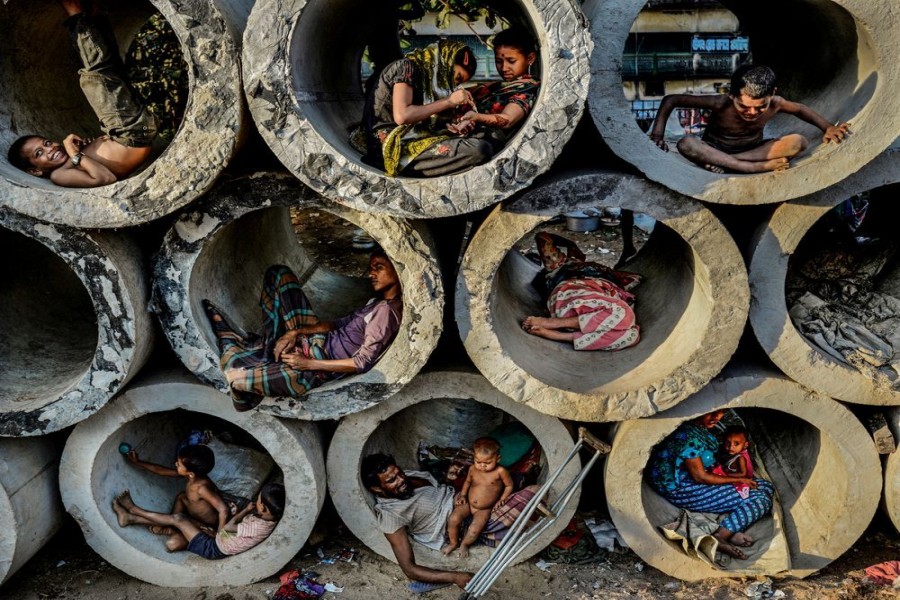
Published :
Updated :

Poverty rate in Bangladesh fell by 1.3 percentage points to 20.5 per cent in the fiscal year (FY) 2018-19, according to reports this week. In the previous FY2018, the poverty rate was estimated at 21.8 per cent by the Bangladesh Bureau of Statistics (BBS).
Planning Minister MA Mannan told the media this week that extreme poverty rate in Bangladesh also dropped to 10.5 per cent in the FY 2019 from 11.3 per cent in the previous FY2018.
The estimation was done based on the economic growth rate and its impact on the poverty situation in the country. The Household Income and Expenditure Survey (HIES) 2016 of the BBS estimated Bangladesh's poverty rate at 24.3 per cent among its total population and the extreme poverty rate at 12.9 per cent.
But the fact remains, although Bangladesh has halved poverty rate since 2000, still one-fifth of the country's population are poor. Moreover, some 20 million people are living in extreme poverty,
In the wake of the rising number of slums inhabited by poor and extreme poor people, the cities need more anti-poverty schemes to eradicate urban poverty alongside eliminating other poverty-related social problems like child marriage and drug addiction, as those are on the rise.
Public representatives and others concerned need to think about ways and means on how to formulate a joint action plan to free the poor and extreme poor communities from the vicious cycle of poverty and hunger.
However, a study puts Bangladesh ahead of India and China in poverty reduction scorecard. It made remarkable progress in reducing the number of chronically food insecure citizens -- from 40 million to 20 million -- over the last decade. But still, Bangladesh has quite a big number of hungry people.
In spite of the fact that the country has improved the status of nutrition of the under-five children in the last two decades, it still has a long way to go to combat malnutrition. In order to reduce vulnerability of the rural poor, the study report suggested finding a permanent solution to the annual monga, a seasonal food crisis caused by lack of work.
Bangladesh is trying to address the issue of hunger with its available resources and in the last two decades it has succeeded to some extent to improve the health of the under-five children. There is a need for increasing investment in sustainable agricultural development to address the country's poverty situation.
The national poverty rate fell in both rural and urban areas, but the pace of reduction was much slower in urban Bangladesh, largely because of slower rates of poverty reduction in Dhaka and increasing poverty in Chottogram. There was no progress in reducing extreme poverty in urban areas.
Sustained poverty reduction will necessitate coordinated multi-sectoral actions. Investments to raise agricultural productivity and growth in the demand for salaried work in the manufacturing and service sectors are crucial for maintaining growth in labour income. Safety net programmes need to be better timed to adequately address short-term needs, better targeted to ensure that benefits are primarily received by the poor, and better tailored to meet the specific needs of the poor. .
Particular emphasis needs to be placed on programmes that focus on: early childhood development in ways that integrate health and nutrition services, pre-school education, early stimulation and learning, and also programmes focused on building skills and improving the employability of poor youth.
Formulation of an effective plan of action has become an urgent need for freeing the poor and extreme poor communities and slum dwellers in the cities from poverty and hunger.
The existing problems and prospects of the underprivileged community should be incorporated in the proposed action plan so that desired results are achieved in this regard.


 For all latest news, follow The Financial Express Google News channel.
For all latest news, follow The Financial Express Google News channel.